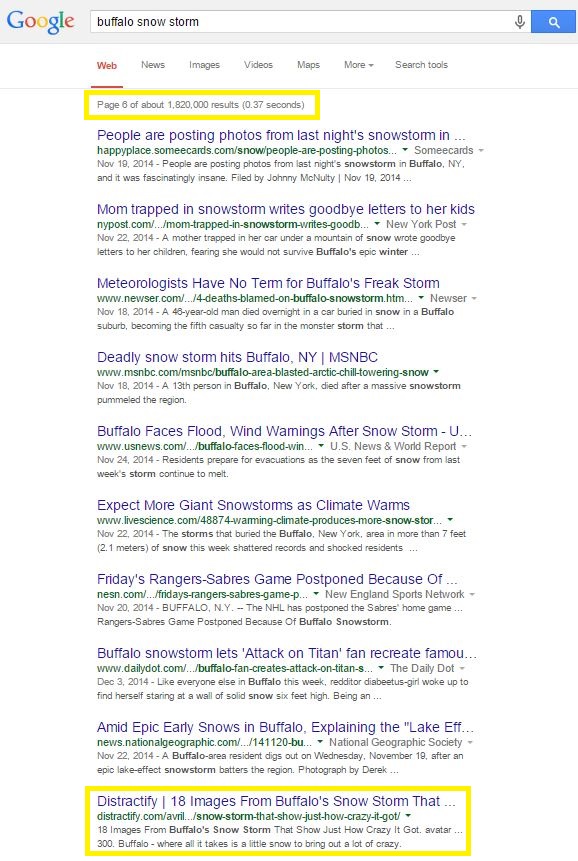How to Write Successful Content in a Clickbait World

“I couldn’t believe what he did next” “7 weight loss tips doctors don’t want you to know” “ This Will shock you” “You won’t believe how one girl got back at her cheating boyfriend”. We’ve all seen them before. The traditional clickbait on Facebook, Twitter, and other social media platforms enticing us to pages we really don’t want to visit but just have to click. Many times we leave these sites feeling unfulfilled and dissatisfied with the content presented.
Over the last few years newsfeeds have been filled with these shared posts as opposed to updates from friends and family that many actually visit Facebook for. This past August Facebook made an announcement that they would be penalizing spammy clickbait posts, making them less relevant in newsfeeds.
With the negative eye on spammy clickbait, it is important to remember there is a time and a place for good clickbait. Learn how to write successful content in a clickbait world that not only engages searchers, but leads them to convert.
Clickbait and the Search Engines
With updates such as Hummingbird, Google has gotten better than ever at identifying the intent of searchers. No longer are sites merely ranked because of their keyword usage. The real purpose of the searcher is now taken into account. Google has learned to interpret what people want based on their search.

While posts from Distractify do exceptionally well on social media platforms, they don’t necessarily show up in search engine results. This “18 Images From Buffalo’s Snow Storm That Show Just How Crazy It Got” post taken from Facebook in November of last year has 2,326 likes, 81 comments, and 1,627 shares. The popularity of this post grew as people read, shared, and liked the post. With all the engagement it is likely this page received a high volume of traffic from Facebook.

However, this success with heavy clickbait titles does not always translate in an organic Google search. Searching “Buffalo Snow Storm” in Google, this Distractify link doesn’t show up until the bottom of page 6. Even though this page is optimized with the right keywords, and Distractify has a high volume of visitors every day, Google works to interpret the user’s intent, putting instead what they see to be more relevant sources of information on the first page.
In this case, the success of clickbait on Facebook did not translate to the search engines. Google recognized that most people searching “Buffalo snow storm” are more likely looking for information regarding the storm as opposed to these images.
Clickbait may get you some traffic on social media, but it will do little for you with organic traffic. Rather than being simply optimized for keywords, web pages must be properly optimized and fulfill the needs of users.
Just because you have the strongest domain, the most links, and the strongest keywords doesn’t automatically mean you will rank if you aren’t focused on the user experience. Even the most exciting clickbait link will be useless if upon clicking the user does not have their question answered.
Clickbait and the Users
 While we should optimize our pages for the search engines, this should never be the primary intent of our content. Google and other search engines have become increasingly adept, interpreting what the user means rather what they say. Because of this our keyword research can be more interest based rather than relying on direct intent.
While we should optimize our pages for the search engines, this should never be the primary intent of our content. Google and other search engines have become increasingly adept, interpreting what the user means rather what they say. Because of this our keyword research can be more interest based rather than relying on direct intent.
There is a difference between the way people use search engines vs. how they might search on social media. When putting keywords in Google, users most likely have a specific question they are looking to answer. Clickbait will not be an effective means of grabbing their attention, as there is no guarantee it will answer their question. Instead they will choose the more reliable results that obviously hold the answer.
Most people on social media aren’t necessarily there for a specific purpose. Rather, they are there to run through the newsfeed, clicking on, liking, and sharing those things that stand out most. It is here that well-thought out clickbait will see the most success.
Finding Balance
One of the biggest problems with clickbait is that it often doesn’t fulfill on promises. These bold aggrandized headings are more informative than the content on the page. Because of this people quickly click away, and even stop trusting clickbait titles.
That doesn’t mean you have to use straightforward and boring headings for your content. Content should be fun and informative for readers. Clickbait when done right will bring people to your site, give them the information they are looking for, and bring them one step closer to conversion.
Writing clickbait that resonates in social media, fulfills your marketing goals, and meets the intent of searchers is extremely difficult and sometimes impossible. Fulfill all three of these by:
- Consider breaking it up – you can create a piece of content designed specifically for social media clickbait. This may not be a page where people convert on your site, but it will be a place for them to answer a question and become more familiar with you.
- Think of how each page of your site can serve your marketing goals – again, these pages may not all be pages that lead to conversions. Some may simply be a way for potential clients to move from your social media pages to your website, familiarizing them with you, leading to bigger decisions later down the road.
- Decide whether a post is targeted toward social or search engines – you can optimize a blog for search engines and post it to social media, but choosing how you want the post to be perceived is imperative. Choose a great SEO title then optimize the social channel’s status with honest clickbait.
- Don’t forget keyword research – keyword research is still important for successful content marketing, but thought of in a different way. With the focus on user intent over specific keyword optimization, it can be easy to disregard keyword research. Don’t let this happen, instead bringing the right keyword research into your headings.
In a social world oversaturated with clickbait, it can seem impossible to get your content noticed. Don’t let this discourage you. Focus on what’s important when posting on social media: answer the questions you present to your viewers. Establishing yourself as an authority will be beneficial in future inquiries searchers have. By avoiding spammy click bait headings yet still creating ones that are engaging and optimized, you can increase your relevance in both search engines and on social media platforms.

